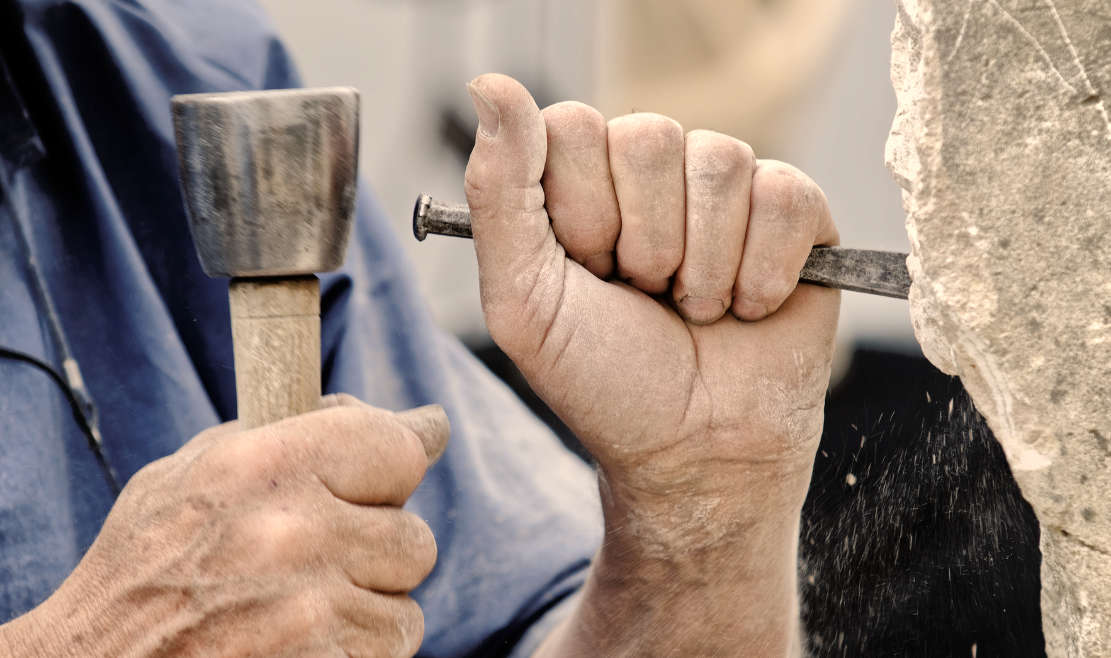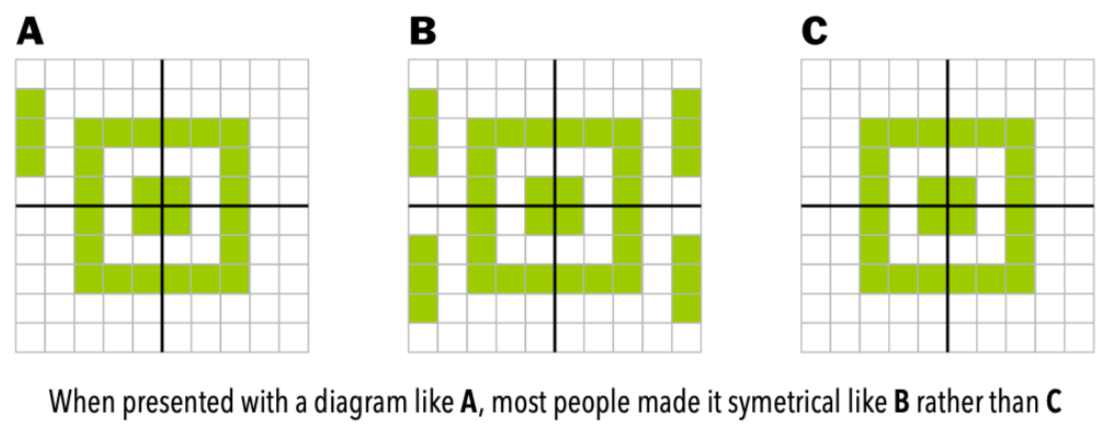
SCHOOL TAUGHT US the correct answer usually requires filling in the blanks, adding information, writing a longer report, citing more references… More more more. Keep piling it on. It’s no wonder then, as behavioral scientists have discovered, most people attempt to solve life’s problems by adding something to the situation. They default to getting a tool, getting a gizmo, getting more data, creating another processes, putting additional people on the project… More more more. More is better, right?
Not always. Sometimes the answer is to subtract something. Sometimes it makes more sense. Sometimes it’s easier. Simplify rather than complicate.
Gabrielle Adams and Benjamin Converse of the University of Virginia conducted a series of experiments. For example, a test presented participants with simple grid diagrams on a computer. The instructions were to make the diagrams symmetrical on both the X and Y axes by clicking squares to turn them on or off. The overwhelming majority chose to add squares.

“When people try to make something better … they don’t think that they can remove or subtract unless they are somehow prompted to do so,” said Adams. Even when prompted, the majority still defaulted to adding rather than subtracting.
“Thinking in pluses instead of minuses could well contribute to modern-day excesses such as cluttered homes, institutional red tape and even an overburdened planet,” said Converse. “We’re missing an entire class of solutions.”
Are you a subtractor?
We vehicle dwellers are, by necessity, subtractors when it comes to material goods. We can’t take it all with us. But subtracting doesn’t need to stop with downsizing. We can also apply it to problem solving, or simply the way we go through each day. Remember this article about more complex plans being less likely to succeed? When faced with a problem, a task, a decision, it might be best to step back and ask, “Does this situation require something more, or something less?” You might be surprised by the answer.

This article makes a lot of sense. It’s very hard to let go of THINGS unless you have done it or THINGS have been taken from you. A few times in my life I have thought, if it all goes away, I’ll simply start over. I won’t give up. I won’t quit. I’m thankful to God that there has always been a way.
If I was a single man, I could more easily subtract. Having THINGS can make for a beautiful life. Letting go of THINGS could open a whole new mind developing, people loving, enjoyable self relying free life.
Let the wheels roll on.
Not just things. Also ideas. And sometimes people.
Excellent point. It is so easy for a single person to subtract. I love this life. Just about everything can go. Every time I remove something I feel relieved. People who cause stress and chaos can also go.
“Does this situation require something more, or something less?”
Funny this. I’ve decided to build a van that can take my small portable synth studio so that I can participate in Modular Synth show-ups around the western US. East coast synthesis is based on subtractive principles and West coast synthesis is based on additive principles. Moog is East coast and Arp 2600 is West coast. I’ve always loved the knobs and wires for East coast Modular synths. Korg just came out with a new synth that includes a few East coast filters while still being a thunderous poly synth based on the same principles as the Yamaha DX-7 of the 80’s. It no longer requires deep dives into the menu to make changes. So now I have both worlds in my mini setup. So my van life adventure will be in playing sets in exotic outdoor settings for making YouTube videos. I won’t be hauling around one of those giant walls and jumbles of wires and can still get the job done based on minimal technology.
Building while Subtracting.
Subtracting to Build.
– I needed to be reminded! “Does this situation require something more or something less?”
Thanks
“It seems that perfection is reached not when there is nothing more to add, but when there is nothing left to subtract.” Antoine de Saint-Exupery, Terre des Hommes (Gallimard, 1939), p. 60.
I like the quote. Here’s another that get right to the point:
“Simplify! Simplify!” –Henry David Thoreau
Like the above photo with the chisel on stone, sculptors know that there is a statue (or other) “hidden” in that stone or marble (or whatever), and they need to subtract from that substance to find it.
Thoreau also said: “for a man is rich in proportion to the number of things which he can afford to let alone.”